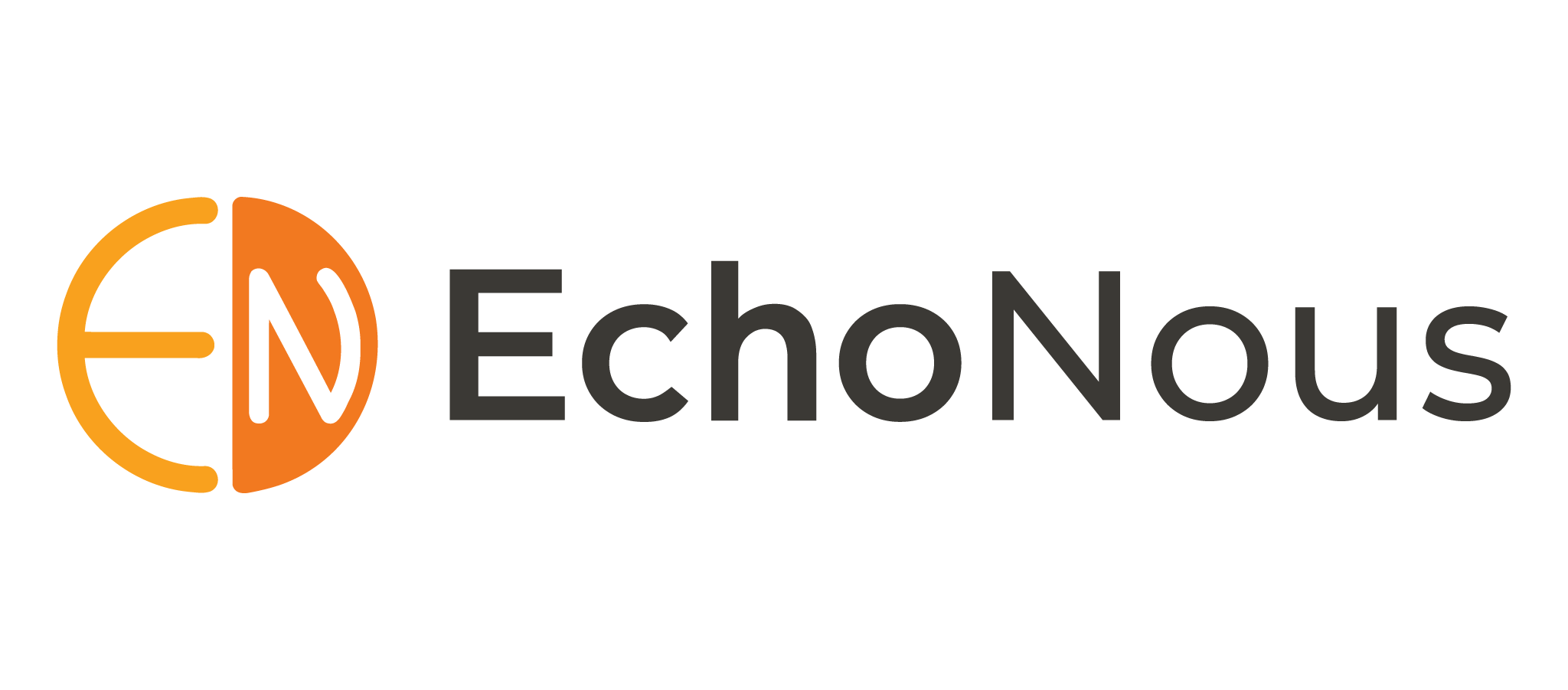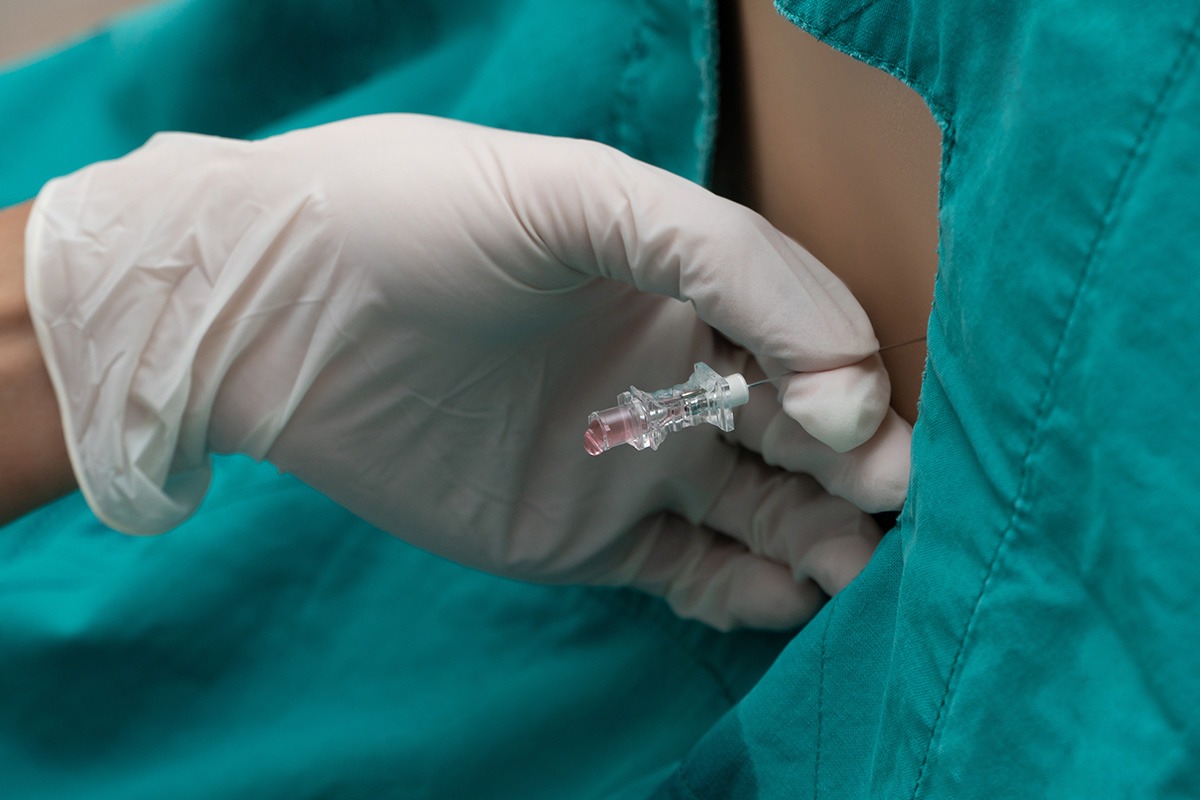Redefining POCUS Value:
Getting Cart-Level Performance Without the Cart-Level Price
When clinicians and administrators evaluate new point-of-care ultrasound (POCUS) devices, “best value” is a critical, multi-faceted metric. It’s not just about “what’s the cheapest probe?” It’s a clinical and financial calculation: “What is the total cost to acquire the diagnostic capabilities and ultrasound device performance we actually need at the bedside?”
In economic terms, value is the gap between the capabilities a device provides and what you actually pay for it. For example, paying $80,000* for a high-end cart is a low-value proposition, especially when it may still require expensive add-ons like a $5,000 option for Continuous Wave (CW) Doppler. That would bring the cart’s total price to $85,000, while a $21,000 system may be able to deliver the same capabilities from the start. Similarly, paying $3,000 for a handheld probe is a low value when you are locked into a mandatory $600/year subscription forever just to keep it functional.
True high value is paying a single, one-time price for a complete system that includes features like gold-standard PZT crystal technology and capabilities like Continuous-Wave Doppler and a full suite of leading AI tools.
- Lower Value: A $50,000 to $100,000+ high-end cart system (like a Philips EPIQ or GE Vivid) has all the features, but its massive price and steep service contracts mean you’re paying a premium for every single system.¹
- Lower Value (Again): A $2,500 “quick-look” probe is cheap, but its value is capped by what it can’t do. It lacks the advanced features (like CW Doppler or sophisticated AI) needed for complex diagnoses, forcing you to call for a cart-based system anyway.²
- Higher Value (The Sweet Spot): This is the ideal. A device that delivers the cart-level diagnostic features (advanced Doppler, AI, full-body imaging) for a price closer to a simple portable, all with a single, one-time cost.
This “Higher Value” category is the most important frontier in POCUS. It’s where a new class of High-Value hybrid systems is emerging, led by a platform designed for this exact purpose: Kosmos by EchoNous.
Let’s break down the market by this clinical value framework.
Table of Contents
- Redefining POCUS Value:
- Getting Cart-Level Performance Without the Cart-Level Price
- Category 1: Handhelds (The “Quick-Look” Tier)
- Category 2: The “High-Value Hybrid” Tier
- Category 3: The Traditional Portables/Carts (The “Workhorse” Tier)
- The True Cost: Probes, Software, and Subscriptions
- Conclusion: How to Find the Best Value for Your Needs
- Q&A: How do consider value when it comes to POCUS machines?
- References
Category 1: Handhelds (The “Quick-Look” Tier)
This is the most well-known “affordable” market. These devices are ultra-portable and connect to a smartphone or tablet. Their value is in their price and convenience for simple procedures and basic exams.
Their primary limitation is diagnostic depth. Most lack advanced Doppler (CW, TDI) and the AI-driven quantification needed for in-depth cardiac or vascular diagnostics. Many also lock you into a subscription model, creating a recurring operational cost that diminishes long-term value.
| Device | Approx. Hardware Cost | Pricing Model | Key Clinical Value |
| Butterfly iQ+ / iQ3 | ~$2,700 – $3,900 | Hardware + Required Subscription | Lower Upfront Cost. A single CMUT “chip” probe.³ |
| Clarius HD3 | ~$3,600 – $5,400 | One-Time Purchase + Optional Membership | Quality image, optional advanced features.⁴ |
| GE Vscan Air | ~$4,800 – $5,500 | One-Time Purchase + Optional Subscription | Dual-probe (linear + phased) design.⁵ |
| Mindray TE Air | ~$4,700 | One-Time Purchase | Good imaging from a major brand.⁶ |
| Philips Lumify | ~$6,000 – $7,200 | One-Time Purchase (5-yr warranty) | Brand reputation and durability.⁷ |
Verdict: Good price for basic tasks, but features are limited. The subscription model is a significant, permanent drain on annual budget.
Category 2: The “High-Value Hybrid” Tier
This is a new category that directly competes with the legacy portable cart and clamshell systems. These devices pack the advanced features of a high-end machine into a portable, far more affordable package. This is where you find the maximum clinical and financial value.
The Kosmos Platform by EchoNous
Kosmos isn’t just another probe; it’s a complete diagnostic POCUS platform using the same gold-standard PZT crystal imaging technology built on an AI-powered engine. The value proposition is simple: deliver cart-level diagnostic power for a portable-level price, with no subscription required.
The system is built around two probes: Torso-One, a single phased array probe optimized for the entire torso (Heart, Lungs, Abdomen, and Bladder), and Lexsa, a high-frequency linear probe for MSK, Nerve, Vascular, and Lung applications.
What truly separates Kosmos from handheld-only systems are the “cart-level” features that allow for comprehensive, high-confidence diagnosis at the bedside. A 2025 head-to-head comparison of six major handhelds in the POCUS Journal confirmed this, noting that of all devices tested (including models from Butterfly, Clarius, Philips, GE, and Mindray), Kosmos was the only one to offer Continuous-Wave Doppler.8 This isn’t just a checked box; this CW Doppler is of diagnostic quality. A 2021 clinical benchmark of 1200 patients at Papageorgiou Hospital found a “strong, statistically significant correlation of 0.98” for peak CW velocities when compared directly against high-end, cart-based echo machines. The study concluded that Kosmos is the “first handheld device that incorporates CW Doppler functionality” and its spectral Doppler is “of diagnostic quality.”9
The system’s AI-driven tools demonstrate similar, cart-equivalent power. The same study found that the Kosmos AI-based automated Ejection Fraction (EF) had a “strong, statistically significant correlation of 0.87” with the “gold standard biplane Simpson’s method” used on high-end carts. Clinically, this provides a massive workflow advantage: the Kosmos AI EF calculation was obtained in “less than 15-20 seconds,” compared to the “2-3 mins” required for a manual calculation on a cart-based machine. This combination of diagnostic-grade CW/PW/TDI Doppler and clinically validated, time-saving AI (including features like AI FAST and Auto Doppler) is what elevates Kosmos from a “quick-look” device to a true “high-value hybrid.”8‚9
The final piece of the value puzzle is the Kosmos Plus configuration. This is a full, medical-grade stand, complete with an iPad Pro and Kosmos Link (allowing for continuous power and multi-probe connection), that turns the system into a complete POCUS cart system for under $21,000.10 A Kosmos Plus setup is as capable (or maybe even more capable) for most POCUS applications than a Philips or GE system that costs 2-4x as much, without the service contracts or add-on software fees.
Verdict: This is the clear “Best Value” winner. You get the high-end cart features (CW/TDI, advanced AI, multi-probe system) for a fraction of the cost, and it’s a one-time capital purchase.
Category 3: The Traditional Portables/Carts (The “Workhorse” Tier)
This is the legacy market of “Big 3” workhorses (GE, Philips, Sonosite) and their main challenger (Mindray). Their value is in their established reputation, high-end specialization, and extreme durability. This tier includes FUJIFILM Sonosite, the “Toughbook” of ultrasound known for its 5-year warranty and durability; GE Healthcare, the “high-end” specialist in cardiac and radiology; and Philips, known for premium image quality. Mindray competes aggressively as the main “value” challenger in this space. However, pricing for these systems reflects their legacy status. New or refurbished models (like a Sonosite Edge II, GE Venue, or Philips CX50) can easily range from $20,000 to over $95,000, depending on configuration.11,12,13, 14
Verdict: These are proven, reliable systems. But their high price means the value gap is minimal. You’re paying exactly what they’re worth, and not a penny less.
The True Cost: Probes, Software, and Subscriptions
On cart-based systems, the sticker price is just the beginning. The real cost is hidden in the add-ons. You may need three separate probes (phased, linear, curvilinear) that each cost thousands. Then comes the software: critical features like CW Doppler or AI-driven EF are often locked behind expensive, one-time license fees. Finally, the new trap in the handheld market is the mandatory subscription, a recurring annual fee that’s required just to keep the device functional. This is what makes the Kosmos value proposition so powerful. The “cart-level” features (CW, TDI, AI) can be included in the one-time purchase, and the Torso-One probe replaces multiple probes. You get a fully-loaded package for a single, one-time price.
Conclusion: How to Find the Best Value for Your Needs
Ultimately, the best value choice will depend on your clinical needs. If your sole metric is the cheapest possible entry price, a subscription-based probe like the Butterfly iQ+ gets you in the door, but you’ll be limited in features and will pay ongoing fees. If you want a simple “quick-look” device that you truly own, a no-subscription handheld like the Clarius HD3 or Mindray TE Air is a solid choice.
But if your definition of “best value” is maximum clinical capability for the cost, the answer is clear: the Kosmos platform from EchoNous. It’s the only system that delivers the advanced diagnostic features (CW/TDI/AI), gold-standard PZT imaging and “complete system” (Kosmos Plus) of a $40,000+ cart at a price point that shatters the old market—all with no subscription.
*All pricing mentioned is in USD
Q&A: How do consider value when it comes to POCUS machines?
In ultrasound, value isn’t just the lowest price tag — it’s the gap between what a system can do and what you pay for it. A high-cost cart with features you don’t fully use is low value. A cheap probe with major diagnostic limitations is also low value. High value is when you get advanced, cart-level diagnostic capabilities at a significantly lower cost and without recurring fees.
Systems like the Philips EPIQ, GE Vivid, or Sonosite platforms deliver excellent imaging and durability — but at $50,000 to $100,000+ per system (plus service contracts and software fees), the cost-to-capability ratio is steep. You pay a premium for every unit, which lowers overall value even though performance is strong.
Handhelds are great for quick looks and simple procedures, but their diagnostic reach is limited. Many lack essential features like CW Doppler or advanced AI measurements. And some require annual subscriptions ($600+ per year) just to stay functional. That recurring fee adds up and lowers long-term value.
High-Value Hybrid systems combine the diagnostic features of a cart with the portability of a handheld. They offer full Doppler suites, AI automation, multi-probe support, and high-quality imaging — all at a fraction of the typical cart price. The best systems in this tier avoid subscription models, making them true one-time capital purchases.
Kosmos delivers cart-level capabilities — including PW Doppler, CW Doppler, TDI, Auto EF, AI FAST, and multi-probe imaging — for a price closer to a portable ultrasound. It uses gold-standard PZT crystal technology, replaces multiple probes with its Torso-One design, and requires no subscription. When configured as Kosmos Plus, it becomes a complete cart system for under $21,000.
Handhelds offer convenience and low upfront cost, but their diagnostic depth is limited. Kosmos includes the full Doppler suite, advanced AI tools, and multi-probe capabilities — features handhelds typically can’t match. And unlike subscription-based handhelds, Kosmos is a one-time purchase.
Traditional portables and carts are proven, reliable systems — but their price reflects their legacy design. Kosmos delivers similar or greater functionality for a fraction of the cost and without additional probe purchases or software add-ons.
– Multiple probes: Traditional carts often require 2–3 probes, each costing thousands.
– Software unlocks: CW Doppler, TDI, advanced measurements, or AI tools often require expensive add-on licenses.
– Subscriptions: Several handhelds require ongoing fees just to use the device.
Kosmos avoids these cost traps by offering complete functionality in a one-time purchase.
References
- Medverguide. Philips Epiq CVx Ultrasound Price, Specs and Machine Comparisons. Accessed November 10, 2025. https://medverguide.com/product/philips-epiq-cvx/
- EchoNous. How Much Does a Point-of-Care Ultrasound (POCUS) Device Cost? Accessed November 10, 2025. https://echonous.com/how-much-does-a-point-of-care-ultrasound-device-cost/
- Butterfly Network. Butterfly Pricing | iQ+, iQ3, & Compass. Accessed November 10, 2025. https://www.butterflynetwork.com/pricing
- Clarius. Phased Array L20 HD3 – Clarius Portable Handheld Ultrasound Scanner. Accessed November 10, 2025. https://www.google.com/search?q=https://store.clarius.com/products/l20-hd3-handheld-ultrasound-scanner
- GE Healthcare. Shop Vscan Air™ CL Handheld Ultrasound. Accessed November 10, 2025. https://www.gehealthcare.com/shop/equipment/vscan-air-cl
- UMI Ultrasound Store. Mindray TE Air Handheld Ultrasound. Accessed November 10, 2025. https://umiultrasoundstore.com/products/mindray-te-air-handheld-ultrasound
- AED Superstore. Lumify Ultrasound System by Philips Healthcare. Accessed November 10, 2025. https://www.aedsuperstore.com/lumify-ultrasound-system-philips-healthcare.html
- Leung SK, Dancel R, Soni RN, et al. Comparison of Six Handheld Ultrasound Devices by Pediatric Point of Care Ultrasound (POCUS) Experts. POCUS J. 2025;10(01):141-156. doi:10.24908/pocusj.v10i01.18722
- EchoNous. Clinical Benchmarking for the Kosmos Platform. Published March 2021. Accessed November 13, 2025. https://echonous.com/clinical-benchmarking-kosmos-platform/
- EchoNous. Turn Your POCUS Purchase into a Major 2025 Tax Deduction. Published October 16, 2025. Accessed November 10, 2025. https://echonous.com/section-179-deduction-for-ultrasound-blog/
- Ultrasound Portables. Diagnostic Medical Imaging | UDS – New & Used Portable Ultrasound Machines for Sale. Accessed November 10, 2025. https://www.ultrasoundportables.com/store
- Quince Medical & Surgical. GE Healthcare: Monitors, ECG, Ultrasounds & C-Arms. Accessed November 10, 2025. https://quincemedical.com/collections/ge
- Strata Imaging. Mindray M9 Versus the Top Portable Ultrasound Machines. Accessed November 10, 2025. https://strataimaging.com/mindray-m9-versus-the-top-portable-ultrasound-machines/
- All States M.E.D. Philips CX50 Refurbished with 3 Probes. Accessed November 10, 2025. https://www.allstatesmed.com/products/philips-cx50-refurbished-with-3-probes




